Part two of our Guide to Maui’s Plants and Animals focus’s on the amazing Plants and Flowers of the Hawaiian Island. Maui is a lush Eden of exotic green plants and jungle trees along with a smattering of jewels I the form of stunning and scented blooms and lushes juice fruits. It is an Island of plenty and one the Hawaiian people farmed and harvested with balance and harmony.
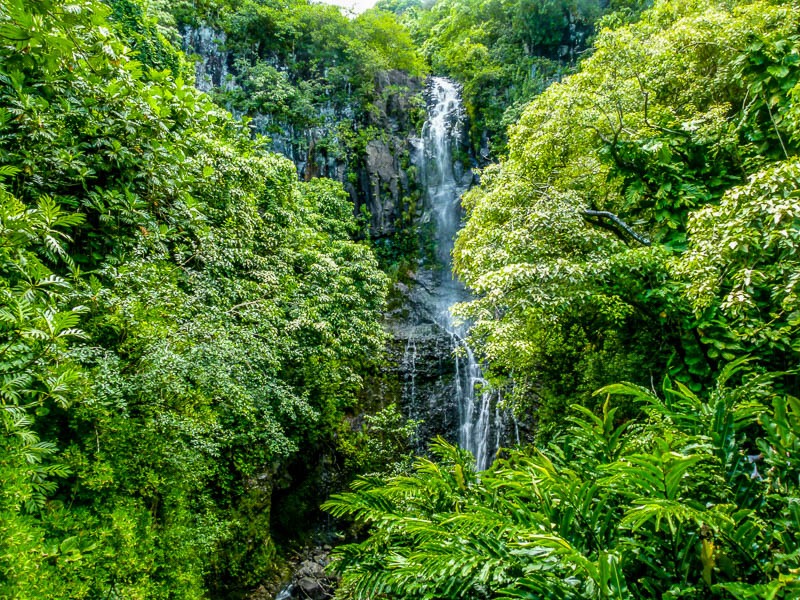
We westerners arrived and transformed many landscapes with intensive Pineapple, coffee, and Sugar Cane farms along with carefully manicured Hotels, Resorts, and Gold Courses. These all introduced many different Plant Species and some Native plants vanished or have been pushed to near extinction.
There is still a whole host of beautiful and near untouched jungle and forest reserves on the Island where nature still rules supreme and many of Maui’s Species still grow on the Island. Plants are part of everyday life in Maui and Flowers play a huge role in cultural events, art, and simple everyday pleasures. Our guide shows you what plants, flowers trees, and fruits grow on the island and what you will see and smell as part of your vacation. You will need to venture well out of the resorts to see some of these but they are all within the reach of any tourist.
<<< Part 1 Fauna of Maui – Maui Animals and Creatures
We started this post over on Part one which is focusing on the Animals and creatures of theIsland and its surrounding oceans, make sure you check this out if you haven’t already. There is some stunning wildlife on the Island.
Flora – Plants
Maui has some truly wonderful plant life with thousands of different plant species and some probably undiscovered in the remote jungles and cloud forests, we focus mainly on the most famous, unique, and wonderful plants you may see during your trip. While a lot of these are actually induced species they have made Maui’s Landscape a wonderful and beautiful place to explore.
Flowering Plants
Plumeria
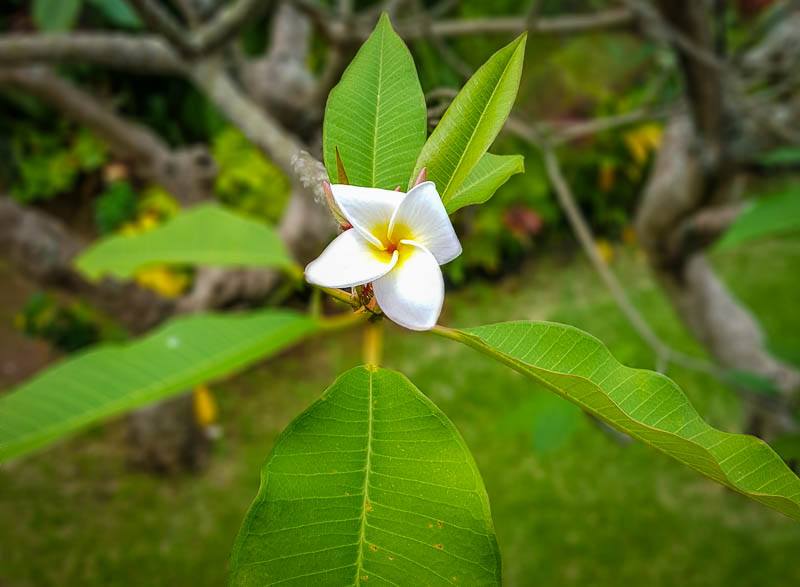
The flower most synonymous with Hawaii, Polynesia, and Tiki Culture the Plumeria is an instant symbol of Hawaii. Most known as the Lei flower when in bloom these wonderful perfectly formed little flowers adorn the thousands of Plumeria trees planted all over the island. The scent given off is wonderful and the flower is powerfully evocative of Island life.
The abundance of the flowers means you can pick a flower every day and slip it behind your ear for that Hawaiian look, and to help jazz up hose Instagram shots with a little Hawaiian Flare. At most Luau#s there will also be Lei Making demonstrations showing how you turn the flower into the iconic island Lei’s we all love so much.
Hibiscus
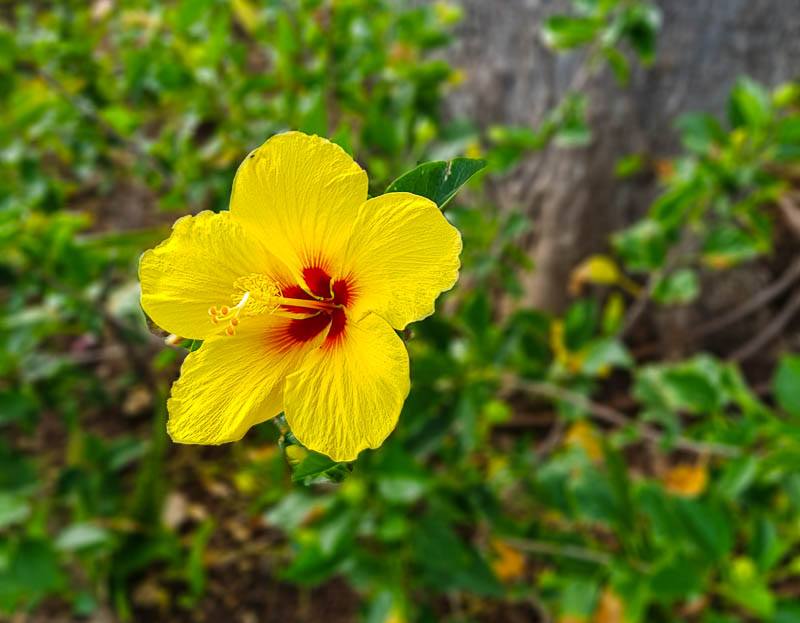
The other Iconic Hawaiian Flower is the Hibiscus flower. While several species are endemic to the islands the borders and gardens of almost every hotel are lined with Hibiscus bushes that produce wonderful blooms almost year-round. The vibrant colors and alluring scents are powerfully evocative of the Island Paradise. So much so the Yellow Hawaiian Hibiscus is the Official State Flower.
Heliconia – Dragon Flowers
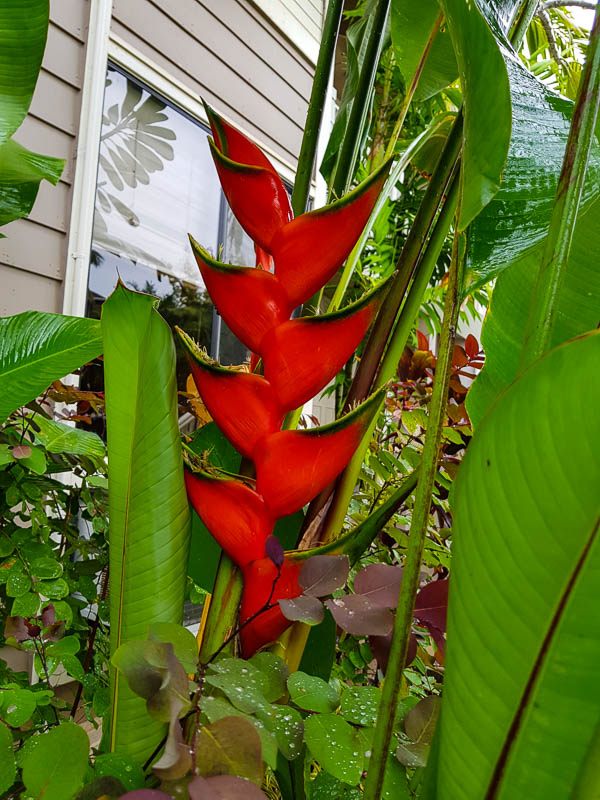
We have always called these Dragon flowers but we can find no reference anywhere on the net to back up this name, we still like it and will carry on using it regardless. The real name of the genus is Heliconia. There are many species on the Island with most appearing in Gardens and borders of hotels and homes around the inhabited regions or picked and used in tropical flower displays in Hotel Lobbies. However, the Plants have got out into the wild and you will see the vibrant red blooms as you travel along the Hana Highway and other more remote areas.
These are all introduced species but look right at home on the Island. The Lobster Claw variety of the Genus is particularly striking with its deep red and pointed nature.
The Bird of Paradise (Flower)
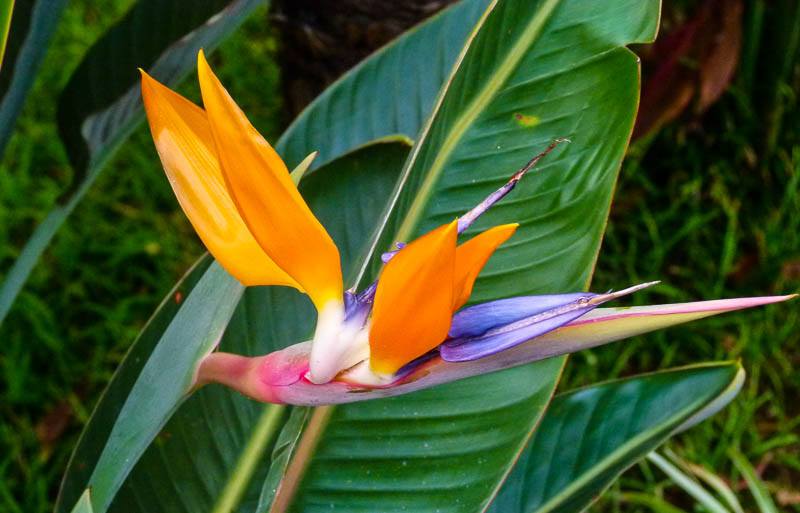
Another imported plant that just fits right at home on the Island. These stunning blooms imported from the South African Jungle have found a home on the Islands as well as all across the more tropical regions of the United States. The blooms erupt into stunning colors and resemble beautiful tropical birds. Hence the name.
Croton
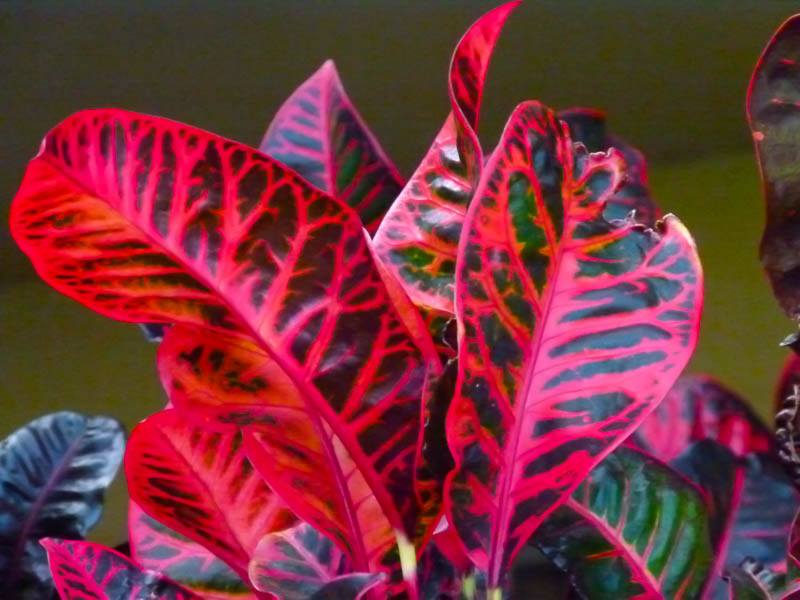
Not strictly a flower, the Croton is mainly known for its striking leaves. Common in most gardens and hotel borders the Croton is hardy and provides Foliage and color year-round. Its robust leaves often turn a vibrant red and provide a real tropical feel. Again these are all imported.
LiliKo’i (Passionflower/Passion Fruit)
Passion Fruit are fairly exotic-sounding to start with but in Hawaii, they go a step further and call it LiliKo’i. These plants are grown for more than just the amazing tangy fruit and they are prized for the wonderful, Weird, and exotic Blooms as well.
Orchids
Orchids are an introduced species but they were brought in so long ago by the Polynesian settlers they are almost native and highly prized but the Hawaiians. Orchids are hardly invasive and require careful nurture to produce an incredible array of wonderful blooms.
SilverSword
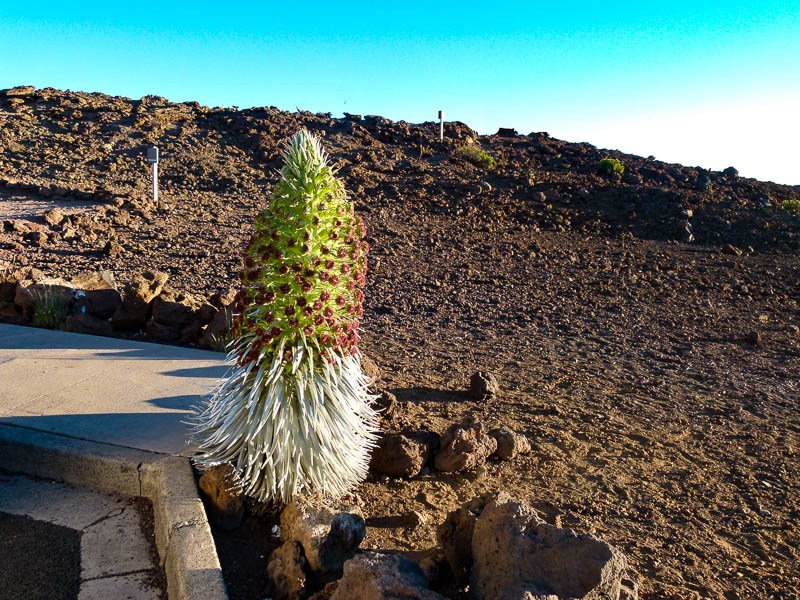
Silverswords are endemic to Hawaii and even to their own Mountain ranges. These incredible Catus-like plants grow only on the very high peaks of Hawaii’s Mountains. The Haleakala Silversword only grows on the slopes of Mai’s highest peak and nowhere else on earth. The High Mountains of Mona Loa and Moanna Kei have their own Silverswords. The Flowers on this amazing plant can be over 6 feet tall and are remarkable to behold. To stand near one of these giants and realize this is the only place in the world they grow gives a real sense of how special the Ialsn is and how unique, precious and hardy life really is!
None-Flowering
Bamboo
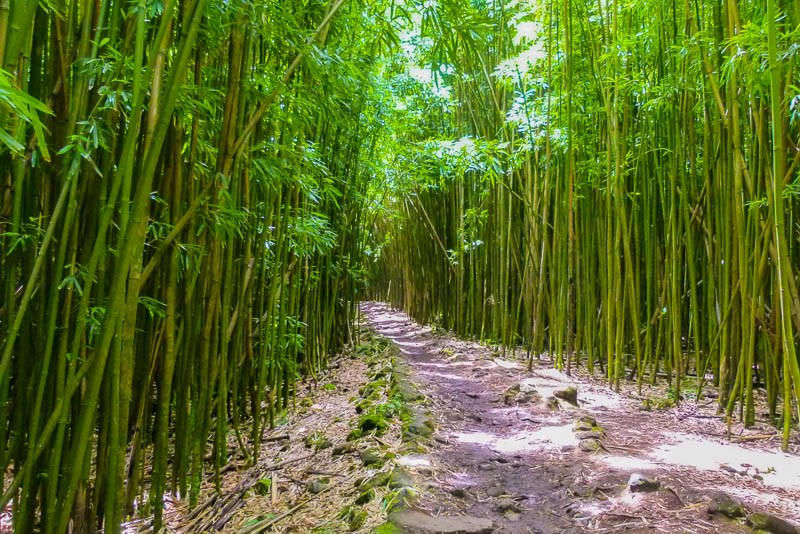
Bamboo is a big problem in the Jungle regions of Maui. This is an invasive species that is practically indestructible, grows like wildfire, and takes over large areas. A perfect example is the Pipiwai Trail. As you hike up the trail you find a huge variety of different plants, ferns, palm elephant ears tree, Banyans, etc… it is diverse and wonderful. Then you hit the Bamboo forest section and it’s just bamboo, as far as you can see an endless invasion.
These forests are pretty incredible, the clunk of the hollow trunks is eerie and spooky and you pass over the boardwalk that keeps the separation, but it is easy to feel these plants could take over the whole island.
Elephant Ears

These Giant leafy greens really let you know you are in a tropical climate, mostly found in the wetter regions of the island such as the Road to Hana we love the Jurrasic feel these plants give.
Taro
Not Quite native but introduce with the first Polynesian settlers so now widespread and cultivated in Taor Paddies across the island. Used for food such as Toro Chips and the “delicacy” Poi.
ʻōhiʻa lehua

Honestly, we don’t know how to pronounce that. We call them Lava Plants or the scientific name is Metrosideros Polymorpha, So go with Polymorphs if you want to sound flashy.
The Lava Plant is the first colonizer of any Lava flow and their presence alerts you to the fact you are on young land. On very young Lava the only green shoots pushing through are the Polymorphs. The Plant is a succulent, so similar to a cactus with thick fleshy leaves. These are synonymous with Hawaii as there are so many young lava flows where only Polymorphia can get a root hold.
Trees
Palm trees
Palm Trees are a symbol of tropical paradises and they are also a survival and colonization success story. Where ever there is a coastline with a tropical climate Palm trees are one of the first to get there. Their seed scarry for huge distances across the oceans and take root anywhere they land. While there are many Palm trees in Maui there are fewer natural ones than you might expect. Many are grown in resorts to provide the tropical feel many expect but the more natural coastlines do not have many Palms at all. Instead, the shores are lined with more evergreen types of trees along with Koa trees and Ironwood trees
Koa Trees
The most numerous Native Tree in Hawaii the Acacia Koa can be seen in most places in Maui, the tall, dense, canopy with long trunks covered silver bark makes these a striking and unique Hawaiian tree.
African Tulip Tree
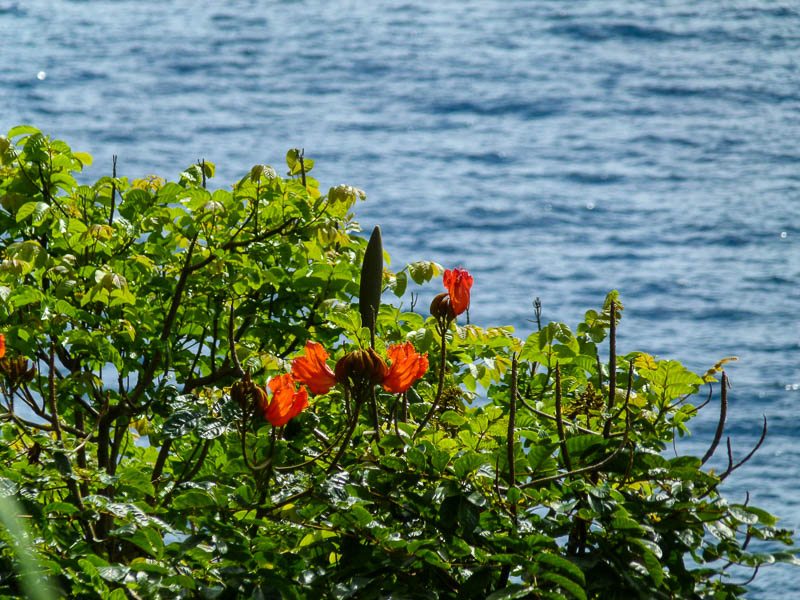
An invasive species, the African Tulip tree is still a beautiful addition to the Hawaiian landscape. Its large canopies become covered in huge blooming red flowers that fill the forests with color.
MonkeyPod Trees

Despite being invasive the MonkeyPod tree has become a Hawaiian Icon. These huge shade-giving trees also known as rain trees provide perfect relief from both the burning sun and the rain. These make perfect shade trees for Parking Lots and open spaces meaning you will see an awful lot of Monkeypods around the Built-up areas of Maui. You will know it’s a monkeypod due to the pod litter that covers the floor!
Rainbow Eucalyptus

As the Name Suggests the Bark of the Rainbow Eucalyptus appears in stunning rainbow colors running all the way up the trunk. This effect issue to the bark peeling away and revealing the different colors that then slowly darken. The Trees can only be found in a few spots on the island such as the grove of rainbow Trees around Mile 7 of the Hana Highway.
The trees are an introduced species, but they are quite wonderful to see and a welcome addition to the island and do not seem to be too troublesome as far as invasive species go.
Banyan Trees
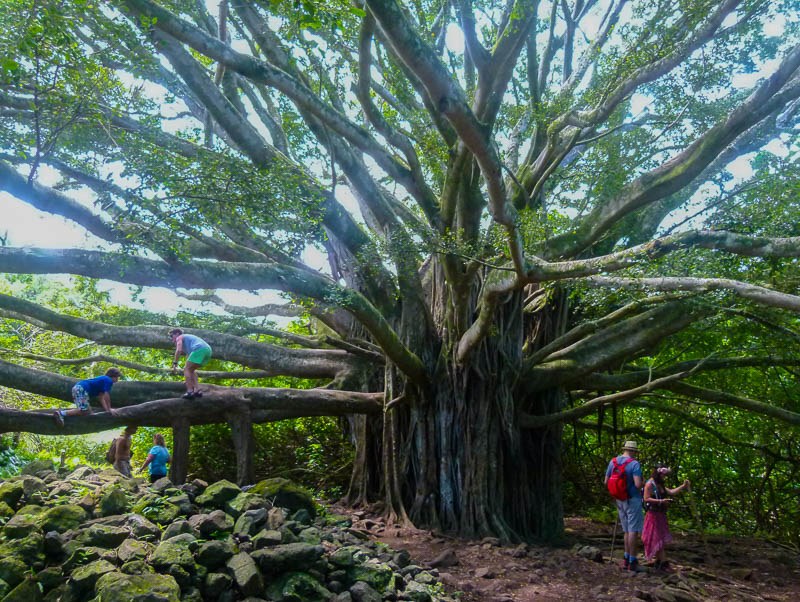
Our Favorite Tree Species in the world! The Banyan tree feels like it is straight out of a fairy tale. While it is an invasive species there are only a few examples on Maui and these are both very old and very established. The Huge Banyan tree in Lahaina Courthouse square covers two-thirds of an acre, while there is an even more impressive specimen on the Pipiwai Trail with long sweeping branches low enough to climb up and explore.
Hibiscus Taliaceus
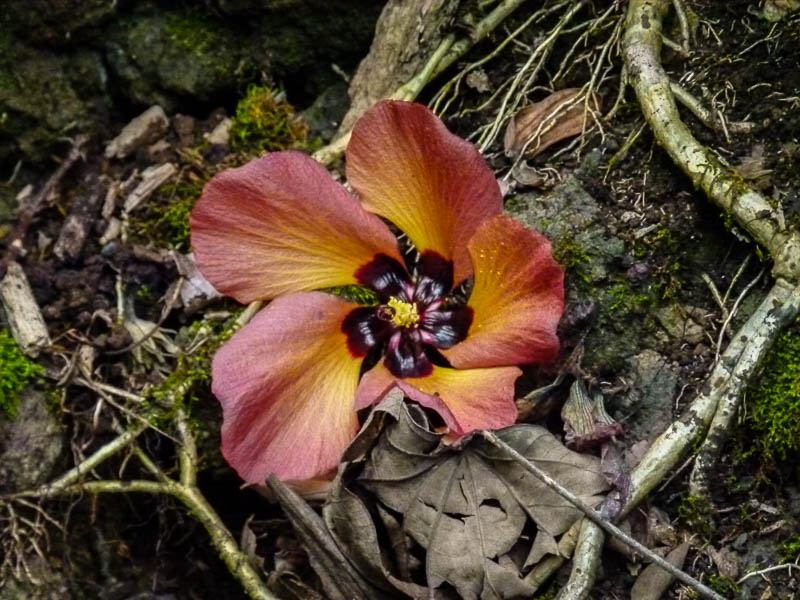
When in Bloom, lookout for Hibiscus Taliaceus. A Large Blooming Hibiscus tree. The Flowers are quite unlike anything else and the trees deposit these down to ground level covering the ground in strange earth-colored blooms. These appear to be some kind of weird Ground flower and are quite wonderful to see!
Fruit

One of the most wonderful things about the Tropical climate of Maui is the fact it is so suitable for growing so many amazing fruits. The list is almost endless:
- Pineapples
- Mangos
- Avocados
- Passion Fruit
- Guava
- Pineapples (yeah we mentioned it twice, we needed to)
- Banana
- Papaya
- Breadfruit
- Coconut
- Starfruit
- and many more…
While you may find fruit trees growing in the wild most are on private property, however many locals set up roadside stands where they sell their fruits to the public. These are likely to be the best fruits you have ever tasted! Also, look out for banana bread (and other fruit bread such as Mango Bread) for sale. These are freshly baked and to DIE for.
Another Quirk of the Maui Climate is its endless Micro-Climates this means it is also suitable for growing other fruits that are not as well suited to intense tropical climates. We are Taking Coffee and Cocoa that need higher elevations and cooler climates. The produce from these is stunning, but there is limited room available so costs can be high, but so worth it.
Have Your Say
Let us know what plants, flowers, and trees you spotted on your Hawaiian Vacation? Did you see something amazing that you cannot identify? Even if is not on our list give us a shout and we should be able to narrow it down, we are pretty good at identifying the plants and animals of the Island.
Just drop us a comment if you have anything to say or any questions at all about the amazing plant life of the Island. Remember to check out Part one as well which focuses on the animals of Maui.


The smell of the flowers on the road to Hana is the most amazing smell I have ever smelt! Is it Jasmin??? I can not forget the wonderful smell!! So beautiful!!
Hi Sandra,
It would be hard to confirm the source of the aroma as it really does vary during the year. The dense jungle along the Hana Highway is home to numerous flowering plants that emit scents at different times during the year. It always smells pretty special but when there is a large bloom of a particular flower then it can get really incredible.
There is a large amount of Pikake, or Arabian Jasmine (Jasminum sambac) that flowers along the road. Unfortunately, this is actually invasive but it has been there a long time now and is considered Naturalised. This could easily have been the source of your scent.
Thanks
Steve